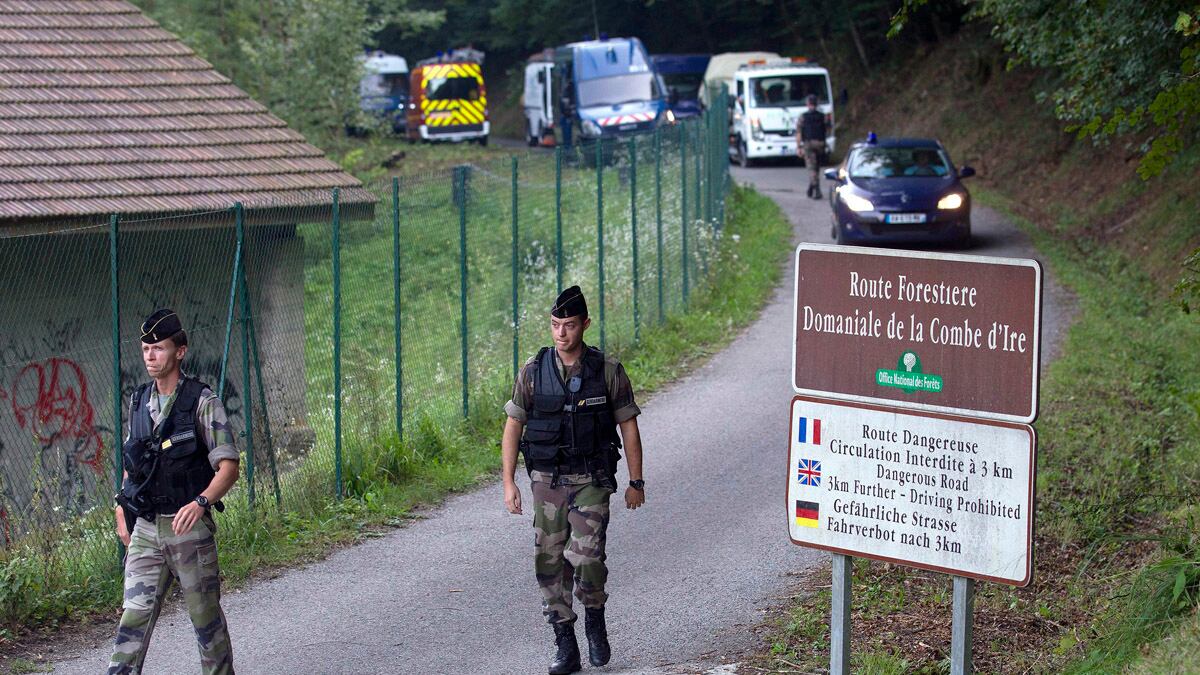Investigators trying to piece together the scattered shards of evidence to solve the quadruple murder of an Iraqi-British family and a French bicyclist on September 5 have finally made a crucial breakthrough.
Saad Al-Hilli, 50, his wife Iqbal, 47, and her mother Suhaila Al-Allaf, 74, along with 45-year-old French bicyclist Sylvain Mollier were gunned down and left for dead on a lonely road in the French Alps six weeks ago. The Al-Hillis' daughters miraculously survived – seven-year-old Zainab was found outside the car, pistol-whipped and shot in the shoulder, and her four-year-old sister Zeena was discovered hiding under her mother’s corpse in the back seat.
Since the bodies were discovered, investigators have focused their attention on Saad al-Hilli, whose curious past and actions before he was killed suggested a man on the run. Rumors of secret Swiss bank accounts and hidden property, coupled with the discovery of a Taser gun and the fact that he changed the locks on his Surrey home before packing up the family camper and heading to France fed conspiracy theories that he was the assassin’s target. U.K. tabloids reported that he was on a British special-forces watch list prior to the Iraq war in 2003, though confirmation of that is elusive. Even the discovery of a phone message on al-Hilli’s phone from a worried teacher at the daughters’ school, wondering why they hadn’t turned up for the first day of class, seemed to underscore that the trip to France was spontaneous, and therefore suspicious. Al-Hilli, born in Iraq, spent a lot of time ranting in anti-Semitic online chatrooms, according to family friends, which helped fuel the fire. But on Friday, French authorities released the first solid ballistic and blood-splatter-trajectory report, which has turned the investigation upside down.

According to the report, Mollier the cyclist was the first person to catch the assassin’s wrath. Investigators had initially proceeded on the theory that the cyclist, who was on paternity leave from Crezus, a company that supplies equipment to nuclear-power plants, had unwittingly come upon a murder in progress. Mollier was a plant supervisor for the division that does research and development into zirconium products with allegedly distant ties to Iran.
Mollier had been shot, it was originally thought, only because he was a witness to the carnage. But after meticulous forensic analyses of the blood splatters on the bodies and especially the soles of the victims’ feet, investigators now know with certainty that al-Hilli and his daughter Zainab were outside the family car when Mollier was shot. The cyclist’s blood was on al-Hilli’s pant leg and on the soles of his daughter’s feet, even though al-Hilli was shot through the window as he sat in the driver seat.
The first shots at Mollier didn’t kill him, based on his autopsy report and his trail of blood on the ground. Instead, investigators theorize that the assassin disabled the cyclist—perhaps intentionally keeping him alive—and then turned fire to the al-Hillis. According to the report, Saad al-Hilli then scrambled back into the family car, locked the doors and frantically threw the vehicle into reverse, backing into a muddy bank where the rear axel got stuck. Little Zainab never made it back into the car. The assassin then pistol-whipped and shot her before turning to al-Hilli, his wife, and mother-in-law, shooting them while they were in the car, and finishing each off with two shots to the forehead. Then, according to the investigators’ theory, the assassin went back to Mollier and fired the final two fatal shots into the cyclist’s cranium. They believe the assassin then searched the body and moved it closer to the car before escaping.
Now the question is why the cyclist was targeted and whether he and the al-Hilli family had met by chance on that fateful day, or if their meeting was planned— and if so, why?






